What'sNEW Aug - Oct 2020
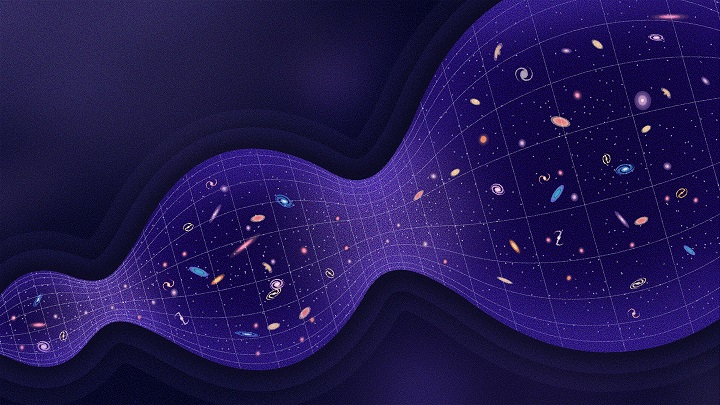 Inflation doesn’t work as it was intended to work. Inflation is the phenomenon invented to explain how the universe, after exploding from nothing in a big bang, could look uniform in every direction. Now its theoretical implications have begun to seem nonsensical to many cosmologists. One of the founders of inflation, Paul Steinhardt, favors a cyclical model, a cosmos that has no beginning, no end, no singularity at the Big Bang, and no multiverse. Computer simulations are showing how this could explain what we observe.
Inflation doesn’t work as it was intended to work. Inflation is the phenomenon invented to explain how the universe, after exploding from nothing in a big bang, could look uniform in every direction. Now its theoretical implications have begun to seem nonsensical to many cosmologists. One of the founders of inflation, Paul Steinhardt, favors a cyclical model, a cosmos that has no beginning, no end, no singularity at the Big Bang, and no multiverse. Computer simulations are showing how this could explain what we observe.
A universe that comes from nothing in a single big bang would preclude cosmic ancestry. We welcome cosmologies that don't start with nothing.
 Big Bounce Simulations Challenge the Big Bang by Charlie Wood, Quanta (+Wired), 04 Aug 2020; re: Big Bounce Simulations Challenge the Big Bang by Charlie Wood, Quanta (+Wired), 04 Aug 2020; re:
 A new kind of cyclic universe by Anna Ijjas and Paul J. Steinhardt, Physics Letters B (+arXiv), Aug 2019. A new kind of cyclic universe by Anna Ijjas and Paul J. Steinhardt, Physics Letters B (+arXiv), Aug 2019.
 Thanks, Stan Franklin. Thanks, Stan Franklin.
 The End... has much more about alternatives to the standard big bang theory. The End... has much more about alternatives to the standard big bang theory.
 05 Nov 2020: George Nickas alerts Steinhardt to Hoyle et al. 05 Nov 2020: George Nickas alerts Steinhardt to Hoyle et al.
 21 Jan 2020: Penrose has doubts. 21 Jan 2020: Penrose has doubts.
 18 Feb 2004: Big bang revised? 18 Feb 2004: Big bang revised?
 27 Apr 2002: universe always existed? 27 Apr 2002: universe always existed?
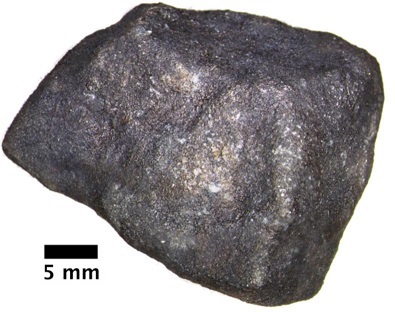 Fragments of the Hamburg meteorite were recovered on ice, promptly after it fell near Hamburg Michigan in 2018. Extensive analyses now show that samples contain a variety of organic compounds. Most commentaries mention "panspermia," meaning the delivery of ingredients for a pre-biotic soup. (We call that pseudo-panspermia.)
Fragments of the Hamburg meteorite were recovered on ice, promptly after it fell near Hamburg Michigan in 2018. Extensive analyses now show that samples contain a variety of organic compounds. Most commentaries mention "panspermia," meaning the delivery of ingredients for a pre-biotic soup. (We call that pseudo-panspermia.)
 The fall, recovery, classification, and initial characterization of the Hamburg, Michigan H4 chondrite by Philipp R. Heck et al., Meteoritics & Planetary Science, 27 Oct 2020. The fall, recovery, classification, and initial characterization of the Hamburg, Michigan H4 chondrite by Philipp R. Heck et al., Meteoritics & Planetary Science, 27 Oct 2020.
 Pristine Extraterrestrial Organic Compounds Discovered in "Fireball" Meteorite, Field Museum, SciTech Daily, 27 Oct 2020. Pristine Extraterrestrial Organic Compounds Discovered in "Fireball" Meteorite, Field Museum, SciTech Daily, 27 Oct 2020.
 Fireball meteorite offers clues to origins of life by Paul Ratner, Big Think, 28 Oct 2020. Fireball meteorite offers clues to origins of life by Paul Ratner, Big Think, 28 Oct 2020.
 Thanks, Stan Franklin and Google Alerts. Thanks, Stan Franklin and Google Alerts.
 Comets: The Delivery System has more. Comets: The Delivery System has more.
 Molecular water detected on the sunlit Moon... by C. I. Honniball et al., Nature Astronomy, 26 Oct 2020. Molecular water detected on the sunlit Moon... by C. I. Honniball et al., Nature Astronomy, 26 Oct 2020.
 Life on the Moon by Chandra Wickramasinghe, The Times, London, 28 Oct 2020. Life on the Moon by Chandra Wickramasinghe, The Times, London, 28 Oct 2020.
Phosphene on Venus is questioned.
 A stringent upper limit of the PH3 abundance at the cloud top of Venus by T. Encrenaz et al., arXiv (accepted for Astronomy & Astrophysics), 16 Oct 2020. A stringent upper limit of the PH3 abundance at the cloud top of Venus by T. Encrenaz et al., arXiv (accepted for Astronomy & Astrophysics), 16 Oct 2020.
 Promising sign of life on Venus might not exist after all by Nadia Drake, National Geographic, 23 Oct 2020. Promising sign of life on Venus might not exist after all by Nadia Drake, National Geographic, 23 Oct 2020.
 Thanks, Rob Cooper and Chandra Wickramasinghe. Thanks, Rob Cooper and Chandra Wickramasinghe.
Success!  OSIRIS-REx collects sample from Bennu's surface by Alexandra Witze, Nature, 20 Oct 2020. OSIRIS-REx collects sample from Bennu's surface by Alexandra Witze, Nature, 20 Oct 2020.
 Tagging Bennu, Astronomy Picture of the Day, 22 Oct 2020. Tagging Bennu, Astronomy Picture of the Day, 22 Oct 2020.
 09 Oct: Illustration and more. 09 Oct: Illustration and more.
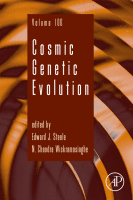 Cosmic Genetic Evolution is published as Volume 106 of the series, "Advances in Genetics." Chandra Wickramasinghe, a founder of the theory of cometary panspermia, is the principal contributor and a co-editor. The other co-editor and major contributor is Ted Steele, a molecular immunologist who favors amendmending mainstream evolutionary theory. Some of the 11 chapters may be downloaded.
Cosmic Genetic Evolution is published as Volume 106 of the series, "Advances in Genetics." Chandra Wickramasinghe, a founder of the theory of cometary panspermia, is the principal contributor and a co-editor. The other co-editor and major contributor is Ted Steele, a molecular immunologist who favors amendmending mainstream evolutionary theory. Some of the 11 chapters may be downloaded.
 Cosmic Genetic Evolution, Edward J. Steele and N. Chandra Wickramasinghe, eds., Oct 2020. Cosmic Genetic Evolution, Edward J. Steele and N. Chandra Wickramasinghe, eds., Oct 2020.
 The Foreword by Brig Klyce, "Some Things Are Simply Given," is available here: pdf | docx. The Foreword by Brig Klyce, "Some Things Are Simply Given," is available here: pdf | docx.
 Astronomers Report They’ve Detected the Amino Acid Glycine in the Atmosphere of Venus by Evan Gough, Universe Today (+ScienceAlert), 15 Oct 2020; re: Astronomers Report They’ve Detected the Amino Acid Glycine in the Atmosphere of Venus by Evan Gough, Universe Today (+ScienceAlert), 15 Oct 2020; re:
 Detection of simplest amino acid glycine in the atmosphere of the Venus by Arijit Manna et al., arXiv, 13 Oct 2020. Detection of simplest amino acid glycine in the atmosphere of the Venus by Arijit Manna et al., arXiv, 13 Oct 2020.
 14 Sep 2020 Phosphene in the clouds of Venus. 14 Sep 2020 Phosphene in the clouds of Venus.
 Thanks, Stan Franklin and Ronnie McGhee. Thanks, Stan Franklin and Ronnie McGhee.
| 15 Oct 2020 |
What'sNEW about HGT  | | |
Genes that bacteria acquire by HGT may proliferate and persist for very many generations even though they confer no benefit.
...HGT can potentiate adaptation to future environmental change. We are not surprised.
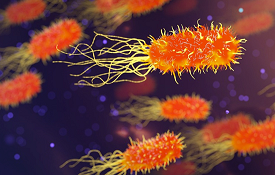
 Horizontal gene transfer potentiates adaptation by reducing selective constraints on the spread of genetic variation by Laura C. Woods, Rebecca J. Gorrell et al, W. Ford Doolittle, ed., doi:10.1073/pnas.2005331117, PNAS, 14 Oct 2020. Horizontal gene transfer potentiates adaptation by reducing selective constraints on the spread of genetic variation by Laura C. Woods, Rebecca J. Gorrell et al, W. Ford Doolittle, ed., doi:10.1073/pnas.2005331117, PNAS, 14 Oct 2020.
 ...some microorganisms can bend the rules of evolution, Monash University
(+PhysOrg.com), 14 Oct 2020. ...some microorganisms can bend the rules of evolution, Monash University
(+PhysOrg.com), 14 Oct 2020.
 Viruses and Other Gene Transfer Mechanisms has referenced updates since 1997. Viruses and Other Gene Transfer Mechanisms has referenced updates since 1997.
 Chandra Wickramasinghe remembers Fred Hoyle: 31-minute interview with students at ISU, 07 Oct 2020. Chandra Wickramasinghe remembers Fred Hoyle: 31-minute interview with students at ISU, 07 Oct 2020.
 Pioneering Astrobiologist: Fred Hoyle (pdf), poster by students at the International Space University, 2020. Pioneering Astrobiologist: Fred Hoyle (pdf), poster by students at the International Space University, 2020.
 Thanks, Samee Rousseau for updating the Hoyle poster. Thanks, Samee Rousseau for updating the Hoyle poster.
OSIRIS-REx will gather samples from the surface of asteroid Bennu on Tuesday, October 20th. NASA's van-sized spacecraft will attempt to sweep up as much as a kilogram of loose surface material in a ten-second encounter. The operation will be programmed on auto-pilot, because one-way radio transmission takes 18 minutes. If needed, a second attempt may come in January. Since arriving at Bennu in 2018, the mission has observed many surprises, like the rocky surface, the occasional ejection of pebbles, and thick carbonate veins – evidence that water once flowed there.
 NASA mission set to sample carbon-rich asteroid by Paul Voosen, Science, 09 Oct 2020. NASA mission set to sample carbon-rich asteroid by Paul Voosen, Science, 09 Oct 2020.
 24 Oct: Success! 24 Oct: Success!
 Comet Rendezvous has some history and updates, especially about Rosetta. Comet Rendezvous has some history and updates, especially about Rosetta.
...there could be regions ...that could allow for planets to be even better for life than our Earth.
 Some planets may be better for life than Earth by Sara Zaske, WSU News (+Phys.Org), 05 Oct 2020. Some planets may be better for life than Earth by Sara Zaske, WSU News (+Phys.Org), 05 Oct 2020.
 In Search for a Planet Better than Earth: Top Contenders for a Superhabitable World (open access)
by Dirk Schulze-Makuch et al., doi:10.1089/ast.2019.2161, Astrobiology, 18 Sep 2020. In Search for a Planet Better than Earth: Top Contenders for a Superhabitable World (open access)
by Dirk Schulze-Makuch et al., doi:10.1089/ast.2019.2161, Astrobiology, 18 Sep 2020.
 Thanks, Stan Franklin. Thanks, Stan Franklin.
 Water on Mars: discovery of three buried lakes intrigues scientists by
Jonathan O'Callaghan, Nature, 28 Sep 2020. Water on Mars: discovery of three buried lakes intrigues scientists by
Jonathan O'Callaghan, Nature, 28 Sep 2020.
 Multiple subglacial water bodies below the south pole of Mars unveiled by new MARSIS data by Sebastian Emanuel Lauro et al., doi:10.1038/s41550-020-1200-6, Nature Astronomy, 28 Sep 2020. Multiple subglacial water bodies below the south pole of Mars unveiled by new MARSIS data by Sebastian Emanuel Lauro et al., doi:10.1038/s41550-020-1200-6, Nature Astronomy, 28 Sep 2020.
 Life on Mars! has history. Life on Mars! has history.
Single-line millimetre-waveband spectral detections ...from the JCMT and ALMA telescopes have no other plausible identification — astronomer Jane Greaves, Cardiff University
...our most plausible explanation is life — molecular astrophysicist Clara Sousa-Silva, MIT
Evidence is accumulating for life in Venus's clouds, as Hoyle and Wickramasinghe predicted.
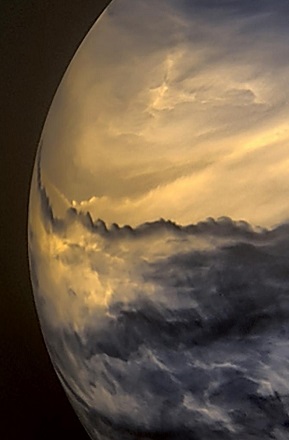
 Phosphine gas in the cloud decks of Venus by Jane S. Greaves et al., doi:10.1038/s41550-020-1174-4, Nature Astronomy, online 14 Sep 2020. Phosphine gas in the cloud decks of Venus by Jane S. Greaves et al., doi:10.1038/s41550-020-1174-4, Nature Astronomy, online 14 Sep 2020.
 Something Weird Is Happening on Venus by Marina Koren, The Atlantic, 14 Sep 2020. Something Weird Is Happening on Venus by Marina Koren, The Atlantic, 14 Sep 2020.
 ...life on Venus stirs up heated debate by Nadia Drake, National Geographic, 14 Sep 2020. ...life on Venus stirs up heated debate by Nadia Drake, National Geographic, 14 Sep 2020.
 ...Phosphine ...in the Atmosphere of Venus, Astronomy Picture of the Day, 15 Sep 2020. ...Phosphine ...in the Atmosphere of Venus, Astronomy Picture of the Day, 15 Sep 2020.
 Thanks, Rob Cooper, Stan Franklin, James Powers and Bob Sweeney. And Ronnie McGhee: Thanks, Rob Cooper, Stan Franklin, James Powers and Bob Sweeney. And Ronnie McGhee:
 ...life on Venus? Check for spores in the atmosphere... by Charles Q. Choi, Space.com, 28 Aug 2020; re: ...life on Venus? Check for spores in the atmosphere... by Charles Q. Choi, Space.com, 28 Aug 2020; re:
 ...the Venusian Aerial Biosphere by Sara Seager et al., Astrobiology, 13 Aug 2020. ...the Venusian Aerial Biosphere by Sara Seager et al., Astrobiology, 13 Aug 2020.
 Microorganisms in the Clouds of Venus by Hoyle and Wickramasinghe, 1982. Microorganisms in the Clouds of Venus by Hoyle and Wickramasinghe, 1982.
 Life on Venus by Chandra Wickramasinghe, The Times, London, 16 Sep 2020. Life on Venus by Chandra Wickramasinghe, The Times, London, 16 Sep 2020.
 Venus's Clouds... by Chandra Wickramasinghe, The Daily Telegraph, 23 Sep 2020. Venus's Clouds... by Chandra Wickramasinghe, The Daily Telegraph, 23 Sep 2020.
 18 Sep 2020: George Nickas comments. 18 Sep 2020: George Nickas comments.
 19 Oct, 19 Oct,
 26 Oct 2020 and 26 Oct 2020 and
 16 Nov 2020: updates. 16 Nov 2020: updates.
 28 Jan 2021: Sulfur dioxide? 28 Jan 2021: Sulfur dioxide?  26 Jul 2021 ...Cannot Be Explained by Conventional Processes. 26 Jul 2021 ...Cannot Be Explained by Conventional Processes.
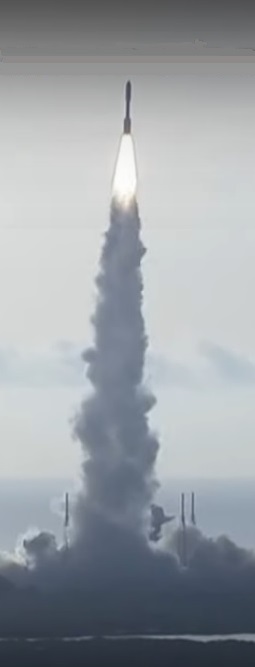 What is Lyfe? Several new missions are on the way to Mars and planetary moons to look for signs of life. What might those signs be, if what's living there is not life-as-we-know-it? Various experts discuss implications of this question in a wide-ranging open-access review article.
What is Lyfe? Several new missions are on the way to Mars and planetary moons to look for signs of life. What might those signs be, if what's living there is not life-as-we-know-it? Various experts discuss implications of this question in a wide-ranging open-access review article.
 Are aliens hiding in plain sight? by Philip Ball, The Guardian, 05 Sep 2020. Are aliens hiding in plain sight? by Philip Ball, The Guardian, 05 Sep 2020.
 Thanks, Justin Willingham.
Let's also be alert for evidence of life-as-we-know-it! Thanks, Justin Willingham.
Let's also be alert for evidence of life-as-we-know-it!
 What Is Life? What Is Life?
 Life on Mars! has background about earlier evidence for life there, some predictions and updates. Life on Mars! has background about earlier evidence for life there, some predictions and updates.
 A fossil on Mars..., seen by NASA's Opportunity rover, is one example of ignored evidence. A fossil on Mars..., seen by NASA's Opportunity rover, is one example of ignored evidence.
Satellite images from NASA'S Mars Reconnaissance Orbiter are sampled in a 2.5-minute video.
 ...10 Years of Mars Reconnaissance Orbiter, NASA JPL via YouTube, 09 Mar 2016. ...10 Years of Mars Reconnaissance Orbiter, NASA JPL via YouTube, 09 Mar 2016.
 Thanks, Rob Cooper. Thanks, Rob Cooper.
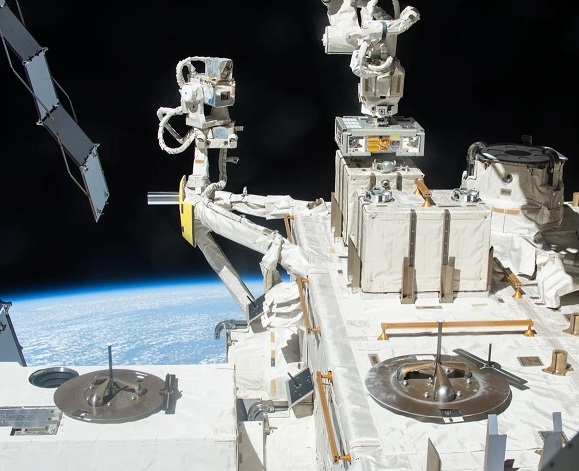 Bacteria survived on the exterior of the International Space Station. Japan's Tanpopo mission placed dried Deinococcus cells in pellets of varying small size on panels that were exposed to space for up to three years. The astrobiologists conclude that some colonies of these bacteria, even without shielding, could endure a trip between Earth and Mars.
Bacteria survived on the exterior of the International Space Station. Japan's Tanpopo mission placed dried Deinococcus cells in pellets of varying small size on panels that were exposed to space for up to three years. The astrobiologists conclude that some colonies of these bacteria, even without shielding, could endure a trip between Earth and Mars.
 DNA Damage and Survival Time Course of Deinococcal Cell Pellets During 3 Years of Exposure to Outer Space by Yuko Kawaguchi1 et al., doi:10.3389/fmicb.2020.02050, Frontiers in Microbiology, 26 Aug 2020. DNA Damage and Survival Time Course of Deinococcal Cell Pellets During 3 Years of Exposure to Outer Space by Yuko Kawaguchi1 et al., doi:10.3389/fmicb.2020.02050, Frontiers in Microbiology, 26 Aug 2020.
 Bacteria could survive travel between Earth and Mars when forming aggregates, Phys.org, 26 Aug 2020. Bacteria could survive travel between Earth and Mars when forming aggregates, Phys.org, 26 Aug 2020.
 Clumps of bacteria could spread life between planets by Paola Rosa-Aquino, Popular Science, 27 Aug 2020. Clumps of bacteria could spread life between planets by Paola Rosa-Aquino, Popular Science, 27 Aug 2020.
 Thanks, Jacob Navia, Richard Hoover, George Howard and others. Thanks, Jacob Navia, Richard Hoover, George Howard and others.
 Bacteria: The Space Colonists has more. Bacteria: The Space Colonists has more.
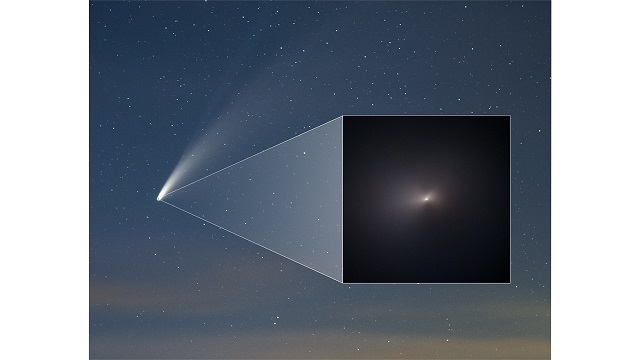 Comet Neowise has passed its July 3 perihelion, releasing tons of gas and dust. New Hubble images show the comet spinning and still spraying contents in two prominent fans. The nucleus, maybe three miles in diameter, remains intact and concealed by a visible coma spanning 11,000 miles. Neowise now returns to its apahelion beyond the planets, not to reappear for 7,000 years.
Comet Neowise has passed its July 3 perihelion, releasing tons of gas and dust. New Hubble images show the comet spinning and still spraying contents in two prominent fans. The nucleus, maybe three miles in diameter, remains intact and concealed by a visible coma spanning 11,000 miles. Neowise now returns to its apahelion beyond the planets, not to reappear for 7,000 years.
 Hubble Snaps Close-Up of Celebrity Comet Neowise NASA Hubblesite (+Newswise), 21 Aug 2020. Hubble Snaps Close-Up of Celebrity Comet Neowise NASA Hubblesite (+Newswise), 21 Aug 2020.
 Thanks, Rob Cooper. Thanks, Rob Cooper.
 Comets: The Delivery System has discussion and links. Comets: The Delivery System has discussion and links.
Bacteria living on atmospheric trace gases are found in Anarctica, the high Arctic and the Tibetan Plateau. Researchers at University of New South Wales, Sydney, and their affiliates found DNA sequences from the specialized metabolic genes in soil from those locations. The Australians conclude that bacteria surviving on air are likely widespread and could possibly exist on other planets.
 Microbes living on air a global phenomenon by Caroline Tang, UNSW (+Newswise), 19 Aug 2020. Microbes living on air a global phenomenon by Caroline Tang, UNSW (+Newswise), 19 Aug 2020.
 Soil Microbiomes With the Genetic Capacity for Atmospheric Chemosynthesis Are Widespread Across the Poles and Are Associated With Moisture, Carbon, and Nitrogen Limitation by Angelique E. Ray et al., doi:10.3389/fmicb.2020.01936, Frontiers in Microbiology, 12 Aug 2020. Soil Microbiomes With the Genetic Capacity for Atmospheric Chemosynthesis Are Widespread Across the Poles and Are Associated With Moisture, Carbon, and Nitrogen Limitation by Angelique E. Ray et al., doi:10.3389/fmicb.2020.01936, Frontiers in Microbiology, 12 Aug 2020.
 Life without water: how do bacteria generate biomass in desert ecosystems? by Sean Bay, Belinda Ferrari and Chris Greening, doi:10.1071/MA18008, Microbiology Australia, 21 Feb 2018. Life without water: how do bacteria generate biomass in desert ecosystems? by Sean Bay, Belinda Ferrari and Chris Greening, doi:10.1071/MA18008, Microbiology Australia, 21 Feb 2018.
 17 Jan 2022: Trace gases ...could potentially support life on ...Mars and Titan. 17 Jan 2022: Trace gases ...could potentially support life on ...Mars and Titan.
 Bacteria: The Space Colonists discusses their versatility, with links to updates. Bacteria: The Space Colonists discusses their versatility, with links to updates.
Clays in an Aguas Zarcas fragment may hold amino acids and stardust that predate the sun. Salts confirm that the meteorite came from a wet environment. The amino acids have remnants of the same chirality (left-handedness) as in all other carbonaceous meteorites – and in life.
Aguas Zarcas is a carbonaceous chondrite that fell in Costa Rica, 23 April 2019. Residents quickly gathered fragments which collectors and scientists were eager to buy. Fortunately, five days without rain left many pieces of the soluble meteorite intact. Meteoriticists like Richard Hoover and Daniel Glavin think Agua Zarcas could be as important as Murchison. And mainstream astrobiologists (we've come that far!) are saying that the life-like organics are pre-biotic ingredients for an origin-of-life soup. This is a small step in the direction of panspermia. But we think the organics may actually be post-biotic.
 Lucky strike by Joshua Sokol, Science, 14 Aug 2020. Lucky strike by Joshua Sokol, Science, 14 Aug 2020.
 Comets: The Delivery System has history and related links. Comets: The Delivery System has history and related links.
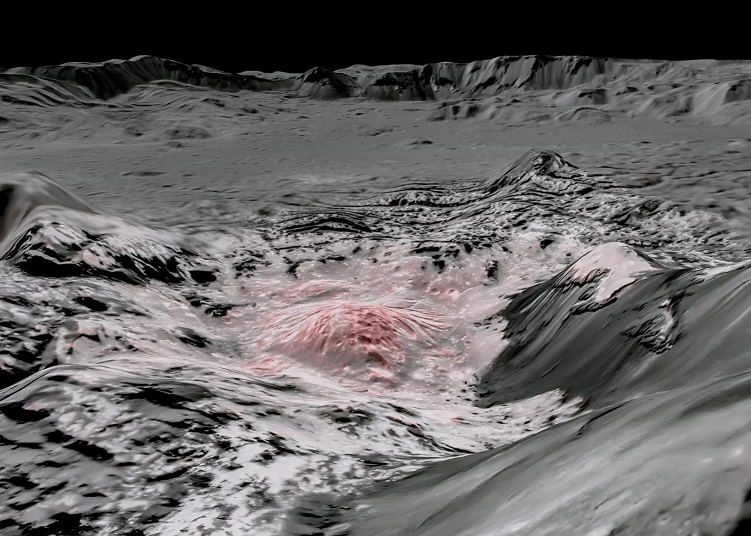 A salty underground ocean on Ceres is looking quite likely. Italian astronomers, studying close-up images taken by the Dawn orbiter in 2018, see evidence of fresh brines in Occator crater. Organics have already been seen elsewhere on the surface. Could there be life on this asteroid?
A salty underground ocean on Ceres is looking quite likely. Italian astronomers, studying close-up images taken by the Dawn orbiter in 2018, see evidence of fresh brines in Occator crater. Organics have already been seen elsewhere on the surface. Could there be life on this asteroid?
 Ceres might be home to an underground ocean of water by Neel V. Patel, MIT Technology Review, 11 Aug 2020. Ceres might be home to an underground ocean of water by Neel V. Patel, MIT Technology Review, 11 Aug 2020.
 Asteroid Ceres: An Ocean World by Monica Young, Sky and Telescope, 10 Aug 2020. Asteroid Ceres: An Ocean World by Monica Young, Sky and Telescope, 10 Aug 2020.
 Fresh emplacement of hydrated sodium chloride on Ceres from ascending salty fluids by M. C. De Sanctis et al., Nature Astronomy, Aug 2020. Fresh emplacement of hydrated sodium chloride on Ceres from ascending salty fluids by M. C. De Sanctis et al., Nature Astronomy, Aug 2020.
 Salt Water Remnants on Ceres, Astronomy Picture of the Day, 01 Sep 2020. Salt Water Remnants on Ceres, Astronomy Picture of the Day, 01 Sep 2020.
 15 Mar 2018 and 15 Mar 2018 and
 17 Feb 2017: more about Ceres. 17 Feb 2017: more about Ceres.
 Life on Europa, Other Moons, Other Planets? has related links. Life on Europa, Other Moons, Other Planets? has related links.
|
 Inflation doesn’t work as it was intended to work. Inflation is the phenomenon invented to explain how the universe, after exploding from nothing in a big bang, could look uniform in every direction. Now its theoretical implications have begun to seem nonsensical to many cosmologists. One of the founders of inflation, Paul Steinhardt, favors a cyclical model, a cosmos that has no beginning, no end, no singularity at the Big Bang, and no multiverse. Computer simulations are showing how this could explain what we observe.
Inflation doesn’t work as it was intended to work. Inflation is the phenomenon invented to explain how the universe, after exploding from nothing in a big bang, could look uniform in every direction. Now its theoretical implications have begun to seem nonsensical to many cosmologists. One of the founders of inflation, Paul Steinhardt, favors a cyclical model, a cosmos that has no beginning, no end, no singularity at the Big Bang, and no multiverse. Computer simulations are showing how this could explain what we observe.
 Fragments of the Hamburg meteorite were recovered on ice, promptly after it fell near Hamburg Michigan in 2018. Extensive analyses now show that samples contain a variety of organic compounds. Most commentaries mention "panspermia," meaning the delivery of ingredients for a pre-biotic soup. (We call that pseudo-panspermia.)
Fragments of the Hamburg meteorite were recovered on ice, promptly after it fell near Hamburg Michigan in 2018. Extensive analyses now show that samples contain a variety of organic compounds. Most commentaries mention "panspermia," meaning the delivery of ingredients for a pre-biotic soup. (We call that pseudo-panspermia.) Cosmic Genetic Evolution is published as Volume 106 of the series, "Advances in Genetics." Chandra Wickramasinghe, a founder of the theory of cometary panspermia, is the principal contributor and a co-editor. The other co-editor and major contributor is Ted Steele, a molecular immunologist who favors amendmending mainstream evolutionary theory. Some of the 11 chapters may be downloaded.
Cosmic Genetic Evolution is published as Volume 106 of the series, "Advances in Genetics." Chandra Wickramasinghe, a founder of the theory of cometary panspermia, is the principal contributor and a co-editor. The other co-editor and major contributor is Ted Steele, a molecular immunologist who favors amendmending mainstream evolutionary theory. Some of the 11 chapters may be downloaded.
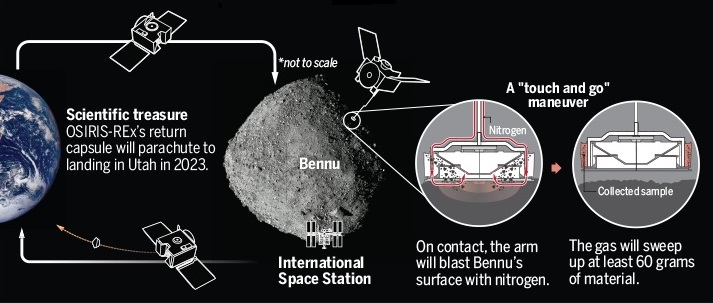

 What is Lyfe? Several new missions are on the way to Mars and planetary moons to look for signs of life. What might those signs be, if what's living there is not life-as-we-know-it? Various experts discuss implications of this question in a wide-ranging open-access review article.
What is Lyfe? Several new missions are on the way to Mars and planetary moons to look for signs of life. What might those signs be, if what's living there is not life-as-we-know-it? Various experts discuss implications of this question in a wide-ranging open-access review article. Bacteria survived on the exterior of the International Space Station. Japan's Tanpopo mission placed dried Deinococcus cells in pellets of varying small size on panels that were exposed to space for up to three years. The astrobiologists conclude that some colonies of these bacteria, even without shielding, could endure a trip between Earth and Mars.
Bacteria survived on the exterior of the International Space Station. Japan's Tanpopo mission placed dried Deinococcus cells in pellets of varying small size on panels that were exposed to space for up to three years. The astrobiologists conclude that some colonies of these bacteria, even without shielding, could endure a trip between Earth and Mars.

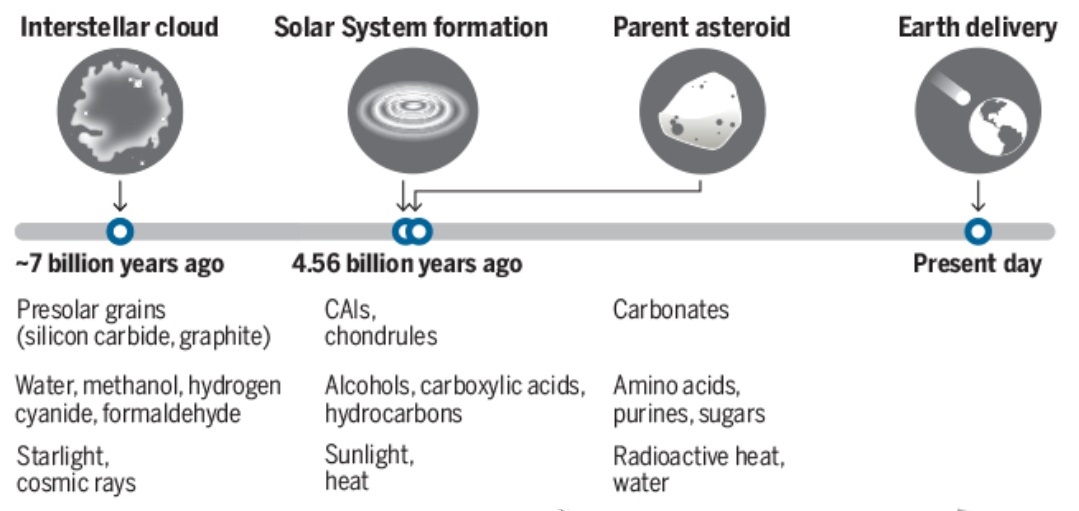
 A salty underground ocean on Ceres is looking quite likely. Italian astronomers, studying close-up images taken by the Dawn orbiter in 2018, see evidence of fresh brines in Occator crater. Organics have already been seen elsewhere on the surface. Could there be life on this asteroid?
A salty underground ocean on Ceres is looking quite likely. Italian astronomers, studying close-up images taken by the Dawn orbiter in 2018, see evidence of fresh brines in Occator crater. Organics have already been seen elsewhere on the surface. Could there be life on this asteroid?